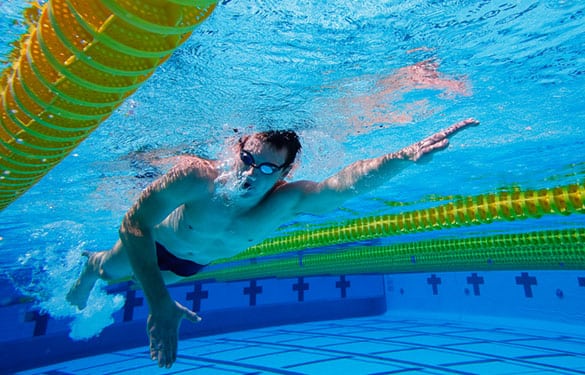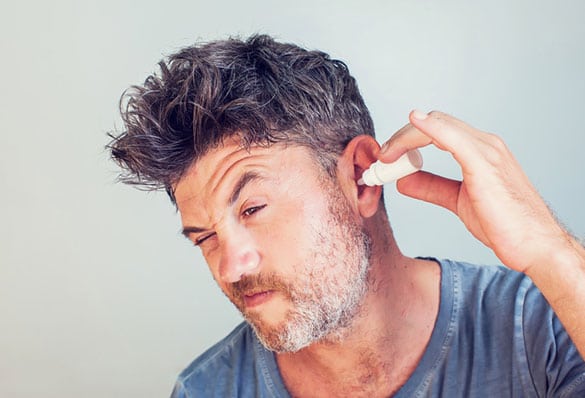
Treatment for swimmer's ear is straightforward, but it's important to make sure the infection hasn't spread.
So-named because it usually develops in moist environments, swimmer’s ear (otitis externa) is an outer ear infection typically linked to bacteria. Early diagnosis and treatment with ear drops often prevents the infection from spreading or becoming more-serious.
- While it’s common to develop this type of ear infection after spending time in water, it’s possible to get it on dry land as well.
- For example, some people get it by damaging thin skin in the ear canal by using cotton swabs and similar objects.
What Causes Swimmer’s Ear?
It’s possible for swimmer’s ear to develop because of a bacterial, viral, or fungal infection, although it’s often associated with bacteria found in water. An infection typically develops when the ear’s natural defenses are unable to prevent bacteria from accumulating and spreading. Sticking stuff in your ears and even the frequent use of earplugs and hearing aids sometimes prevents protective earwax from forming, which can make ears more susceptible to infection.


What Are Possible Symptoms?
Ear pain, difficulty hearing, itchiness in the affected ear, and fluid drainage are among the common symptoms associated with otitis externa. Symptoms are typically classified by severity as mild, moderate, or advanced. Mild symptoms, for instance, may include minor discomfort and visible redness. Patients with moderate and advanced infections might experience:
- Excessive drainage of pus or fluid
- Muffled or diminished hearing
- Ear pain associated with movement
- Lymph node swelling
- Temporary hearing loss
- Foul-swelling drainage
- Fever
How Is Swimmer’s Ear Diagnosed and Treated?
A visual inspection of the ear canal and eardrum is usually part of an initial exam when you visit an ear, nose, and throat specialist with a suspected case of swimmer’s ear. If the infection is severe, the middle ear may be examined as well to determine if the infection has spread. It’s important to know this since outer ear treatments aren’t always appropriate for infections extending further inside.
Treatment usually involves the use of ear drops with various medications. An acidic solution may be included to restore a normal antibacterial balance. Inflammation can be reduced with a steroid medication. Ear drops with antibiotics can help fight a bacterial infection. Some solutions include anti-fungal medication. A cotton or gauze wick is sometimes used to ensure ear drops sufficiently get into the ear canal. If some degree of ear-related discomfort is experienced, over-the-counter or prescription pain medications may be recommended.
What Can Be Done to Encourage Successful Healing?
You can play a role in helping your ear heal by taking some steps as a complement to your medication. For starters, avoid swimming, diving, scuba-diving, and immersing yourself in water that reaches your ears. Placing cotton balls with petroleum jelly in your ears while bathing can further prevent water from getting into your ears. You can also protect your ears as the infection clears up by taking a break from wearing earplugs, headphones, or hearing aids until discomfort or drainage has stopped.
Swimmer’s ear is often preventable if you take proper precautions, such as keeping your ears dry with a soft towel or cloth after swimming, showering, or bathing. Using protective coverings when swimming can minimize moisture accumulation; also, avoid placing any foreign objects in your ears that may cause a tear in skin within your ear canal. If you recently recovered from an ear infection, an ear, nose, and throat doctor can give you more specific advice.


